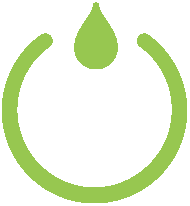Catch it. Check it. Change it. How Psychology is the KEY to unlocking better health.
Catch it. Check it. Change it.
Another new year has commenced, and what I typically observe at the start of every year is the most of us have set solid goals for key areas such as our career, business plans, gym memberships, diets, 6-week fitness challenges, competitions and events, travel, however what is usually not identified as a goal for many busy professionals who are ready to start the cycle of high preforming is food behaviour.
I wrote in an earlier article about the connection between corporate athletes and elite athletes being high performers who successfully delivered winning performances consistently. However, the striking difference being that corporate athletes do not have the right set-up in place (i.e., nutrition, regular training, recovery, and sleep) to effectively be set up to regularly succeed (read burnout).
Your behaviour towards food will either sabotage you or empower you. For those who feel chronically stressed and are constantly pushing you own limits mentally, emotionally, and sometimes physically, the tendency to develop certain behaviours such as stress/emotional eating, overeating, or not eating at all, is common.
One of the key aspects of my work with high achievers and top performers, is psychology. As an accredited nutritionist with a background in psychology, I don’t underestimate how much our behaviour towards food impacts ALL our goals. And it’s not surprising that by February most people have not achieved their health goals and feel despondent and dissatisfied with themselves, their careers, and their lifestyles.
One technique I use frequently with clients who are struggling to achieve their goals because of certain sabotaging food behaviours (emotional/stress eating, overeating, binging) is a simplified representation of the cognitive restructuring process used in Cognitive Behavioural Therapy (CBT), known as "Catch it, check it, change it".
The 3 C's refer to key concepts that are fundamental to understanding how thoughts, feelings, and behaviours are interconnected. This approach helps individuals identify and modify negative thought patterns that contribute to distressing emotions and behaviours.
Here's a breakdown of each step:
Catch It:
Definition: The first step involves becoming aware of and identifying negative or irrational thoughts.
Process: Pay attention to your thoughts, especially those that contribute to negative emotions or behaviours. This step is about catching and recognizing automatic or distorted thoughts.
Check It:
Definition: Once you've identified a negative thought, the next step is to evaluate its accuracy and validity.
Process: Challenge the negative thought by examining the evidence for and against it. Ask yourself if there's a more balanced or realistic way to view the situation. Consider alternative perspectives and interpretations.
Change It:
Definition: After checking the validity of the negative thought, the final step is to replace it with a more balanced and constructive thought.
Process: Develop and adopt a more positive and realistic interpretation of the situation. This might involve reframing the thought, focusing on strengths, or considering alternative explanations. The goal is to replace negative thinking with more adaptive and constructive thoughts.
Here’s real-life example of how to apply Catch it, catch it, change it to a certain food:
Situation: Imagine you’re trying to make healthier food choices but face a tempting situation where there's a plate of cookies in the office breakroom.
1. Catch It:
Automatic Thought: "I can't resist these cookies. I have no self-control, and I'll ruin my diet if I eat one."
2. Check It:
Challenge the Thought:
Is this thought based on facts, or is it an automatic, negative assumption?
Have there been times when I successfully resisted unhealthy snacks?
Am I using black-and-white thinking (all or nothing) in this situation?
Generate Balanced Thoughts:
"I have successfully made healthy choices before, and I can do it again."
"Eating one cookie doesn't mean I've ruined my entire diet. I can make better choices for the rest of the day."
“I’ve already had a treat today; do I need to have another one in the same day?”
3. Change It:
Reframe the Thought:
"I can enjoy one cookie in moderation without derailing my progress."
"I have the power to make conscious, balanced choices. I'll savour the cookie and then move on to healthier options."
“I’m not hungry and I’m not deprived if I don’t eat another treat food today. I can have one tomorrow”.
By going through this "Catch it, check it, change it" process, you can break the cycle of negative thinking associated with food choices and develop a more balanced and positive mindset. This approach helps in fostering healthier eating habits and a more constructive relationship with food.
If you feel you could use support in 2024 to break unhealthy, sabotaging habits and finally have the energy to perform at your best, then we can work together in my 3-Month or 6-Month programs, depending on your needs. Book a call and we can talk through which options is best to help you achieve your health goals in 2024.


